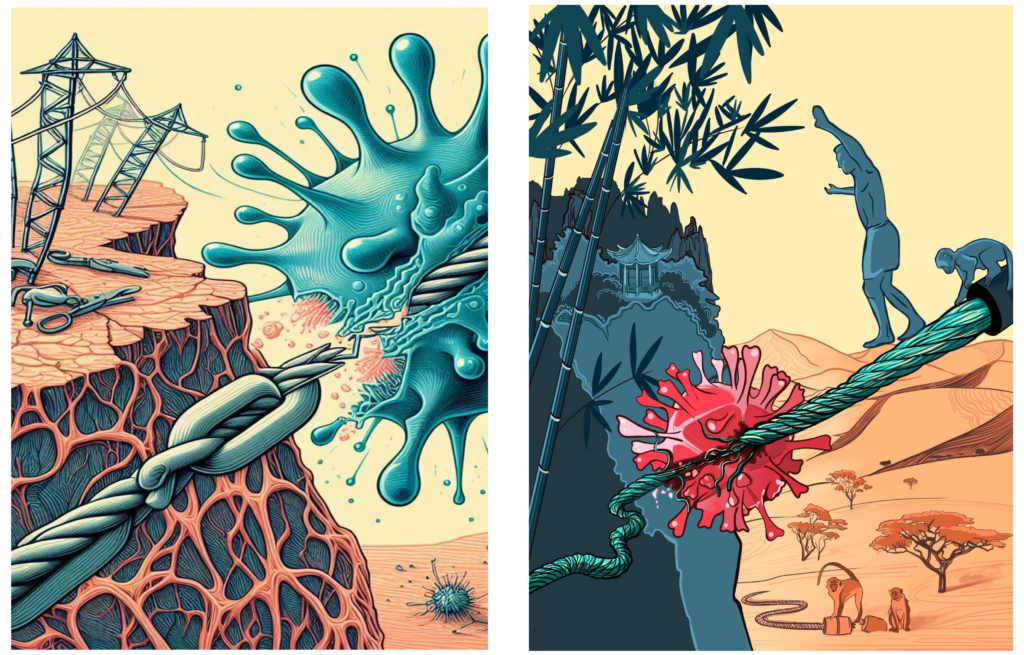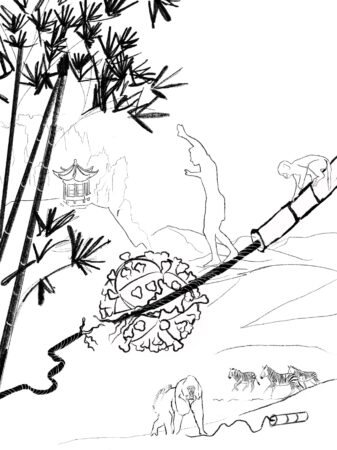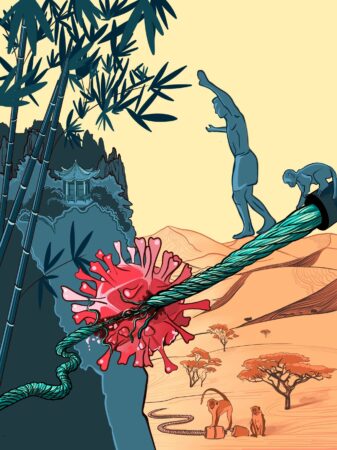Can AI Tools be Integrated into Science Communication?
The recent surge in artificial intelligence (AI) technology is simultaneously fascinating and frightening. While computer algorithms and machine learning have been around for a while, the current generative AI boom feels different. Is it just me, or does every other YouTube ad feature a man ranting about what you need to know to financially survive the age of AI? Whether or not generative AI threatens our livelihoods, it is here to stay. But, what role will AI play in the highly technical field of science communication? Today, we consider if, and hopefully how, AI tools will be harnessed to enhance science communication. To wrap up, we’ll look at recent cover art that started as an AI-generated image.

Adding AI Tools to our Science
Communication Toolbox
The text generation and image creation capabilities of AI tools are increasingly impressive. Generative AI tools like ChatGPT, DALL E, and Midjourney are more and more reliable every day. As a result, commonplace apps used by large and small businesses alike have integrated these AI tools. Yet, if six-fingered hands are a common AI mistake, how can AI be used to illustrate the details of science like right-handed DNA chiral molecules? Here at SayoStudio, we have been asking ourselves these questions, as well as the following:
- What skills do we need to hone to use generative AI tools effectively?
- How can we incorporate AI tools into our science communication and visualization process to enhance our creativity and productivity?
Below, we look at a project that gave us insight into some ways that we might incorporate AI into our process.
Visualizing Science for Journal Cover Artwork
We recently worked with Kolin Clark, a postdoctoral researcher in Dr. Liang Shan’s lab at Washington University in St. Louis. Nature accepted their research group’s manuscript for publication in Nature Chemical Biology, and invited them to submit cover artwork to consider for the journal cover. The Shan lab focuses on the CARD8 inflammosome sensor for HIV/SIV, which may be responsible for T cell death during active infection in humans, Asian macaques, and apes. HIV/SIV proteases cleave CARD8’s long tail, which people often refer to as a “tripwire,” activating the inflammosome.
Interestingly, some African old-world monkey species can host the SIV virus without developing AIDS. It turns out these non-pathogenetic hosts still have the CARD8 protein, but it has mutated and lost the tripwire function. Researchers attribute this advantageous mutation to longer historical exposure to the virus.
Optimizing AI-Generated Images for Our Customers
When Kolin Clark first came to us, he presented AI-generated cover artwork for journal submission. The image showcased the “tripwire” concept, an HIV virion simply cleaving a tripwire. He explained that in their minds, it was perfect, but most journals don’t accept AI-generated artwork. For this reason, they were hoping we could help. We started our work by asking the following questions.
- Do the cars and wire-cutting tools in the background have significance?
- What about the telephone poles? Are they trying to show downstream signaling?
- Is this landscape significant?
- Is there anything else missing?
- Do you like the color palette and 2D, cartoon-like style?

Based on Clark’s answers, they were happy with the foreground image, the overall style, and the color palette. However, it turned out that the tripwire-associated background elements did not have any significance. So this is where our team dove in.
We took pencil to paper to brainstorm how to communicate all the key points of their research for a more comprehensive illustration that visually summarized the significance of their findings. With the style developed by AI, and the details modified and corrected, we hand-drew the final art. In the end, the AI-generated image gave us an excellent jumping-off point to confirm style preference, and accommodate a tight timeline.
Using AI Tools Effectively to Communicate Science

Working with Clark gave us insight into how AI might fit into future science communication projects. One of our strengths at SayoStudio is the concept development that comes before creating science art. It’s not an exaggeration to say that it’s a thrill for us to successfully imagine innovative ways to visualize science. Using AI image creation tools to jump-start preliminary design tasks like generating color palettes, mood boards, and style boards, can give us more time for the foundational research and concept development phases of our process.
Viewed in this context, AI tools like Midjourney are just one more tool in these initial steps. From there, it remains the job of expert science communicators to integrate science visually and accurately. Just like Google’s effectiveness as a search engine relies on how well users communicate with it; the effectiveness of AI tools heavily depends on how well users can communicate with them. That’s right. Old school communication.

Harnessing the Power of AI Tools in Science Communication
Chris Do, a self-described futurist, stated, “In this age when we can make anything, it becomes the question of why we should make it, not what we can make and who can make it for us.” Here at SayoStudio, we are constantly vetting new tools that allow us to be more creative and less technical, all while staying true to accurately portraying science. We think that generative AI tools are no exception. Ultimately, we expect AI tools to streamline our processes, ramp up production, and allow us to step in as the expert curators we are in scientific storytelling.
The post AI in Science Communication appeared first on SayoStudio.




